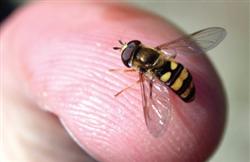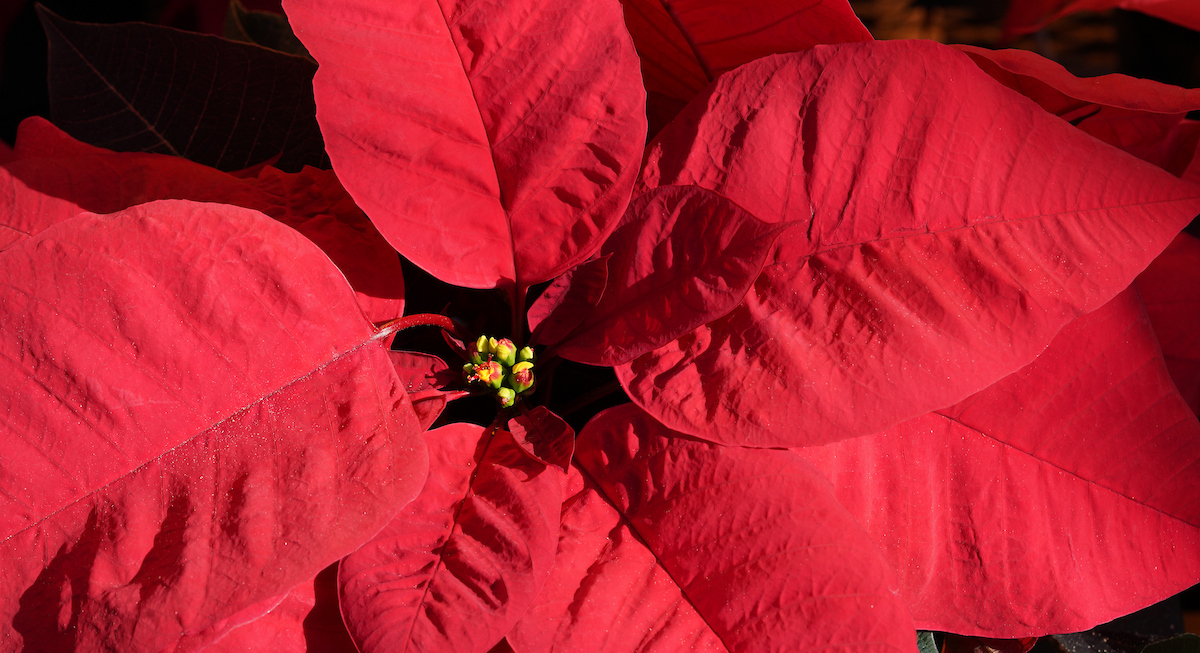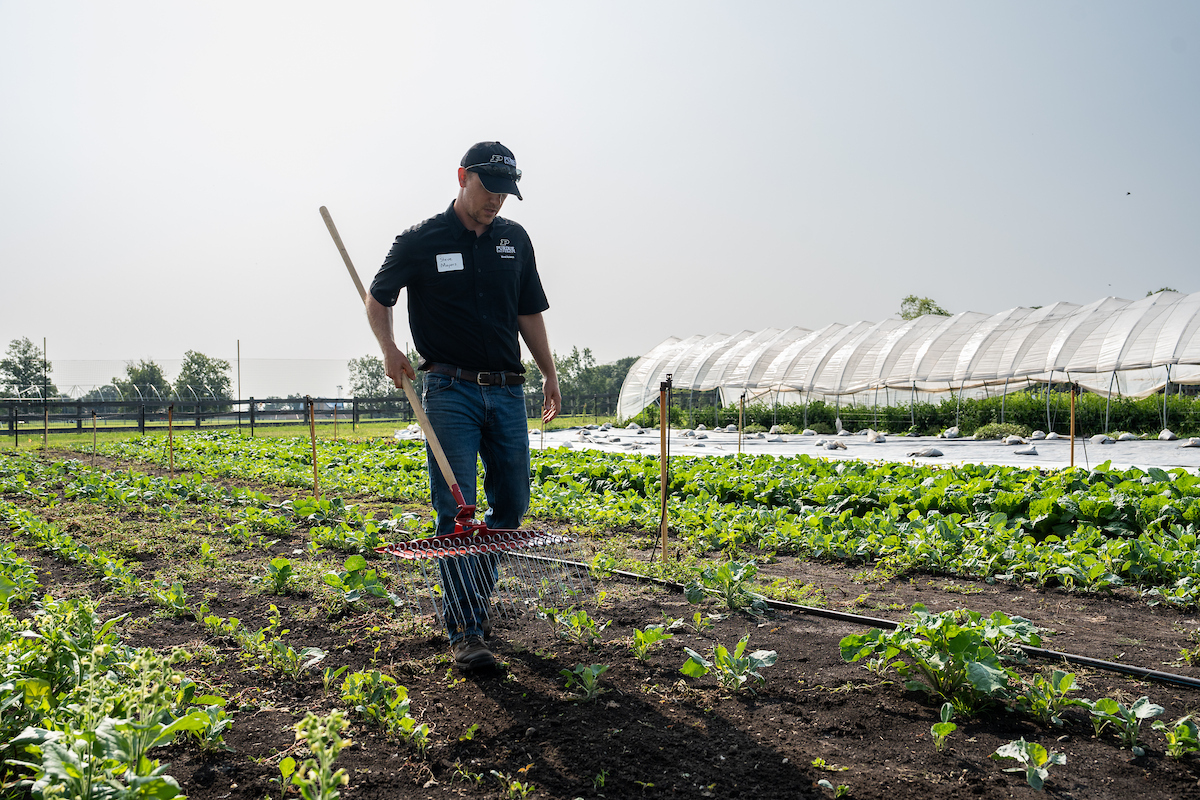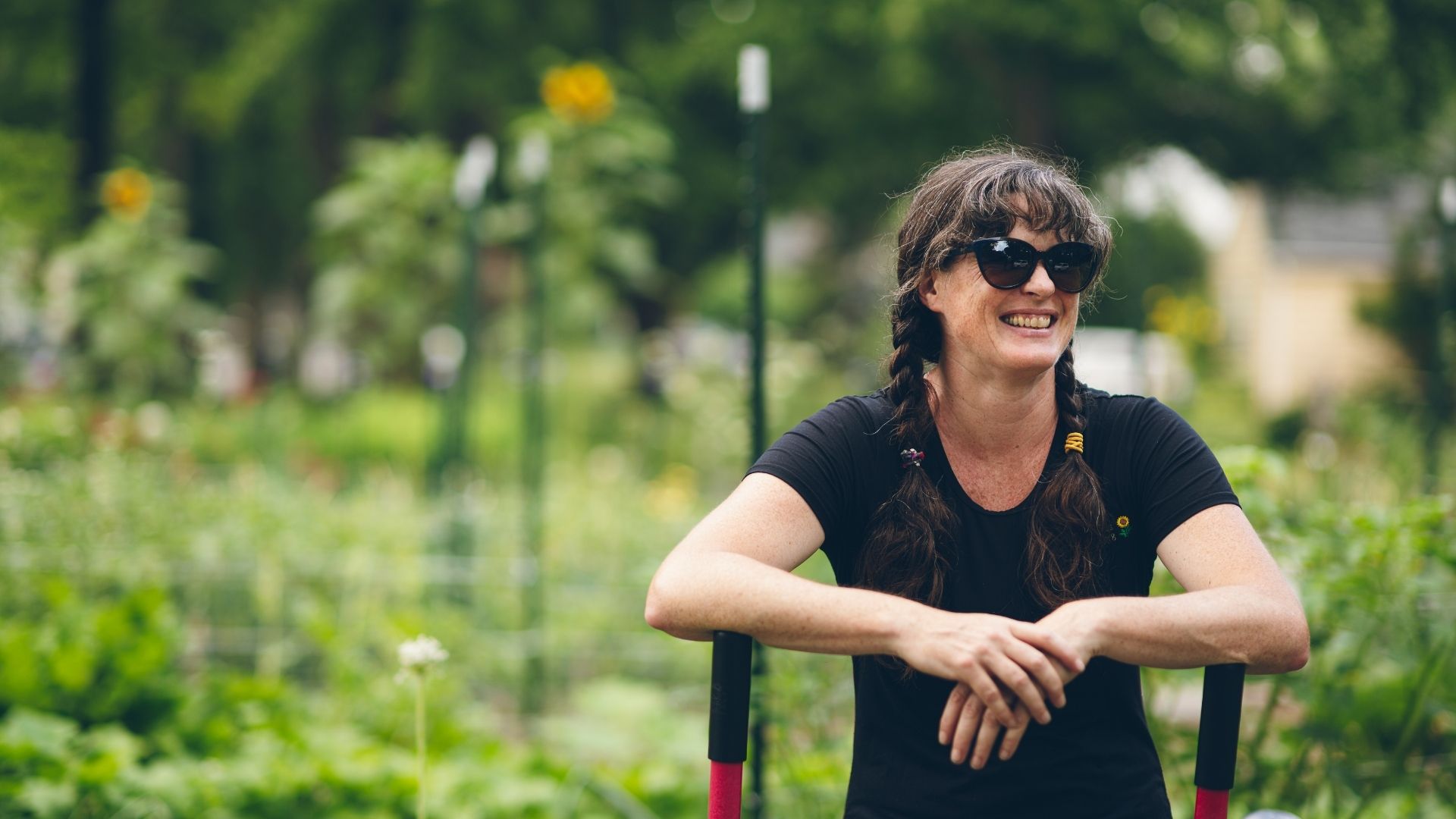This Bee Look-Alike Has No Sting

Hover flies (a.k.a. syrphid flies) are prevalent this time of year, as they have been in many previous years, and they are particularly numerous around corn and soybean fields. They are yellow and black (a bee look-alike) and they hover in the air, occasionally alighting on your skin in wiggling their abdomen up and down. It is a fly that looks and acts like a bee, but it has no sting. A Purdue expert explains more about hover flies.
Purdue entomologist, Tim Gibb, described hover flies. “Hover flies often swarm around people and even land on them, presumably looking for moisture and salts on our skin.”
Hover flies are aptly named because they can hover around people. They mimic the look and behaviour of bees, and by doing so they scare some people who confuse them with either sweat bees or yellow jackets. But, they are a harmless fly.
Gibb said sweat bees often have a metallic coloured head and thorax. Yellow jackets are usually larger than hover flies and have a distinct yellow and black striped abdomen.
Gibb described hover flies as having a single pair of wings, with bright yellow and black bands. Bees and wasps have two pairs of wings. Gibb quoted the old adage, “Two wings fun, four wings run.”
Hover flies possess no body part with which they can inflict pain. They can’t even bite – they have what’s called a sponging/lapping mouthpart, the same as house flies and fruit flies.
Gibb highlighted key differences in behaviour and appearance between hover flies and bees or wasps:
Gibb said that hover flies are beneficial because they help pollinate plants, and in their immature stage (larvae), they eat aphids that can be pests on many types of plants.
Hover flies can be a nuisance by their persistence and when present in large numbers. But, populations usually decline within a week or two.
One relatively new thing that we have been learning is that hover flies in corn fields are evidently consuming leftover pollen. John Obermeyer, Purdue entomologist, said, “We found that there is actually preference by some species of hover flies to feed on corn pollen,” he said. “They are utilizing a protein source that would just normally go to waste.”
Find Gibb’s bulletin on hover flies at: http://extension.entm.purdue.edu/publications/HN-94.pdf. The publication has pictures of a hover fly, a sweat bee, and a yellow jacket so that you can compare and easily recognize each insect. Also access a recent article on hover flies (“Buzzing Swarms of Yellow and Black Flies Are Not A Stinging Threat”) by other Purdue Extension experts at: https://www.purduelandscapereport.org/.






